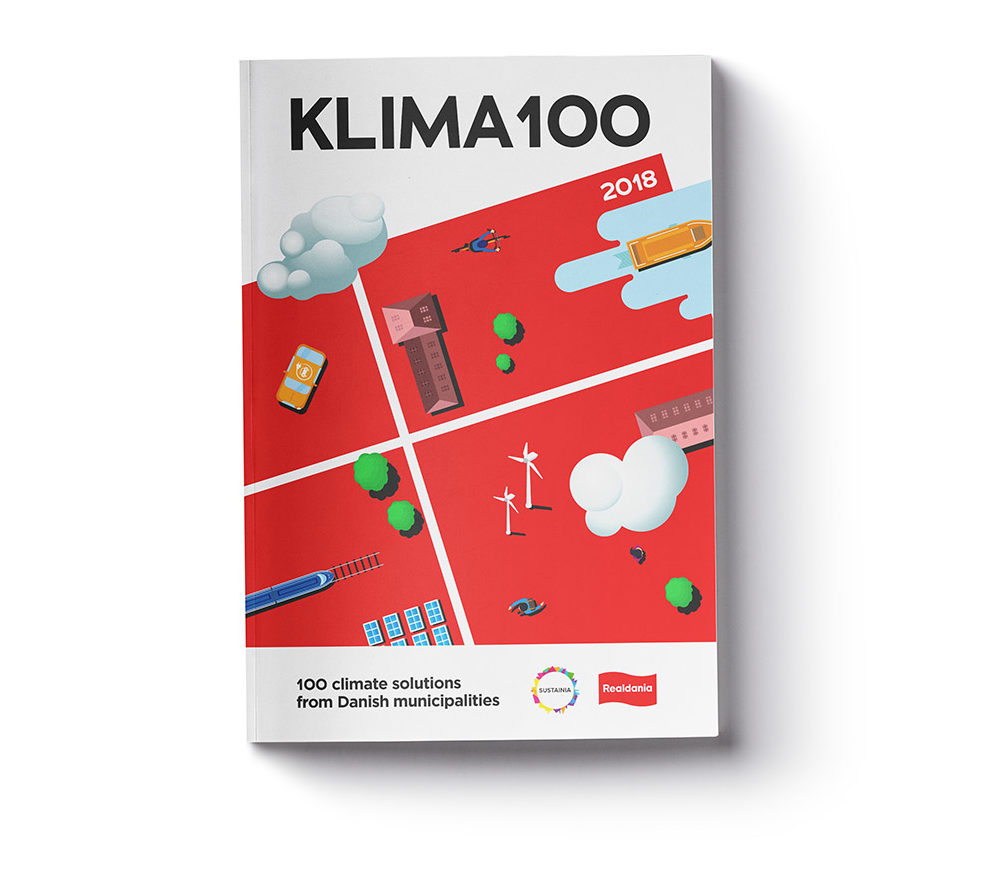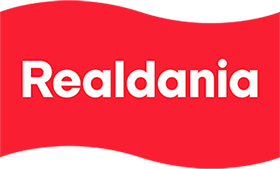Sponsored by Realdania
Sustainia’s latest publication demonstrates how local communities and municipalities pave the way for brand new market opportunities.
In late May, Nordic Clean Energy Week took place, where major economies from around the globe met to accelerate the green transition. The cutting edge publication Klima100, a partnership between Sustainia and leading Nordic philantropic foundation Realdania, was officially launched during the summit at Copenhagen’s newly built architectural wonder, BLOX, with an event entitled ‘Klima100 – Sharing Local Climate Solutions.’

The publication demonstrates how localized, ‘bottom-up’ innovation is not only diversifying the disruptive markets of tomorrow, but is also vital to maintaining our way of life. C40 estimates that 40% of the Paris Agreement targets can be delivered by cities. However, the net contribution required by local governments may be even bigger. In turn, the need to slow down global warming, adapt to climate change, and create a greener future at the local level, is paving the way for the greatest market metamorphosis we will ever witness.
40% of the Paris Agreement targets can be delivered by cities.
The Klima100 publication, and our featured Klima100 Series, is living proof that the green revolution is happening at all levels and that local, small-scale opportunities are essential in solving some of Denmark’s (and the world’s) biggest climate challenges. However, the Klima100 Series encompasses solutions that go beyond the environmental. Just as climate action forms one part of the 17 United Nations Sustainable Development Goals, Klima100 demonstrates how social and economic challenges can also be addressed through climate initiatives.
3 Solutions Picked by the Editors
1. Ringkøbing-Skjern – Energy Plan Paves the Way for 100% Renewable Energy
In Ringkøbing-Skjern, harnessing the potential of wind is key for the municipality to achieve 100% self-sufficiency with renewable energy by 2020.
Denmark’s geographically largest municipality, Ringkøbing-Skjern, is well on the way to becoming 100% self-sufficient with renewable energy by 2020. By utilizing the area’s vast wealth of natural resources, the municipality has already managed to increase its renewable energy supply from approximately 20% in 2007 to 58% in 2015. In particular, wind energy production has increased by 479%, from 888 to 4,257 TJ/year. In Denmark, Ringkøbing-Skjern is thus the municipality producing the most electricity (in absolute terms) from onshore wind turbines. The large amount of wind energy generates benefits for not only locals but the entire country, as much of it is exported to the rest of Denmark.
The energy plan Energi2020 is developed in close collaboration between the City Council, the Energy Council, the Energy Secretariat and a number of voluntary and professional energy groups. Based on recommendations, meeting and workshops with citizens the City Council has defined and decided specific areas of actions and priorities. These efforts do not only involve the municipality legislation and administration, but also citizens, companies and institutions. This partnership approach increases local ownership of the many energy projects in terms of development, investment and production.

Sustainable Development Goals addressed
![]()
![]()
![]()
SDG #7 “Affordable and Clean Energy”: The project increases the production of sustainable energy, especially wind and solar, resulting in a CO2 emissions reduction of 11.1 to 2.8 tonnes per year per capita between 2007-15.
SDG #8 “Decent Work and Economic Growth”: The project creates jobs and boosts employment growth: 4,137 people now work in the energy and climate sector. In addition, Ringkøbing-Skjern has the lowest unemployment rate, at just 2.4%.
SDG #13 “Climate Action”: As part of Energi2020, more than 400 homes underwent energy audits, leading to significant energy savings in the municipality. A further 1,000 energy audits have already been scheduled.
2. Viborg Municipality – Cooling Down a Factory to Warm Up the City
Bjerringbro’s local heating plant has entered into a collaboration with the company Grundfos to supply district heating using the factory’s surplus heat.
The project ‘Energicentralen’ (the energy central) has enabled Bjerringbro heating plant to utilize surplus heat from Grundfos’ production plants for district heating. Groundwater is used to cool down the factory machines and store the surplus heat until it is ready to be distributed through the district heating system using a series of heat pumps.
Grundfos previously used refrigerators for cooling, which in themselves consumed large amounts of energy and generated heat. Now, 15% of Bjerringbro’s district heating comes from the Energicentralen project, equivalent to 13,500 MWh of heat, and an additional 10,500 MWh for cooling. The Energicentralen is also designed in so that visitors can easily learn about the plant through large windows and information screens displayed throughout. All of these initiatives led to the collaborative project winning the Heat Pump City of the Year award in 2014. The project has been so successful that a project called ‘Energicentralen 2’ is already in the pipeline.

Sustainable Development Goals addressed
![]()
![]()
![]()
SDG #8 “Decent Work and Economic Growth”: The project contributes to sustainable economic growth by reducing fossil fuels in district heating, while the company Grundfos reduces its consumption and cost of energy and cooling.
SDG #9 “Industry, Innovation and Infrastructure”: The establishment of Energicentralen projects 1 and 2 means that it is no longer necessary to construct traditional refrigeration systems, responsible for excess heat and emissions.
SDG #17 “Partnerships for the Goals”: Grundfos and Bjerringbro heating plant have established a partnership connecting the company and local city to create an innovative and sustainable project for the benefit of all.
3. Aarhus – Smart Renovations for Energy Efficiency
Part of a large international project, the city of Aarhus is improving indoor climate through building renovations and smart technology for energy efficiency.
The City of Aarhus, Sweden’s Växjö, Lithuania’s Kaunas, and a number of other collaborators are working together on an ambitious project that maps linkages between energy renovation, health, and indoor climate. The project, READY, is a demonstration project showing how smart data and new technologies can help to optimize existing solutions as well as develop new ones. Smart grids, low temperature district heating, heat pumps, solar panels and many more have all been tested.
The main objective is to uncover possibilities for reducing pressure on the energy grid at peak times. The project is investigating how existing housing can be renovated for energy efficiency in a cost effective way, to meet future climate challenges and requirements for indoor climate and health. In Aarhus alone, 413 apartments across the Ringgården Housing Association – built in the 1980s – have been renovated using batteries, heat recovery and solar panels, which generate both power and heat from the sun. The measures are expected to reduce energy consumption by over 50% with the remaining energy coming from renewable sources. READY also investigates whether users have changed their energy behavior following renovations.

Sustainable Development Goals addressed
![]()
![]()
![]()
SDG #7 “Affordable and Clean Energy”: With their professional operations and many housing units, the Ringgården project demonstrates how social housing associations are suited to contributing to renewable energy and efficiency measures.
SDG #11 “Sustainable Cities and Communities”: The READY project ensures modern and resource-efficient housing for disadvantaged citizens in the social housing association Ringgården, located in Aarhus Municipality.
SDG #12 “Responsible Consumption and Production”: READY also targets consumption habits of residents. Ringgården’s residents contributes to the project with sustainable management and efficient utilization of natural resources.
This article was unlocked by Realdania, so that you could read it for free.


